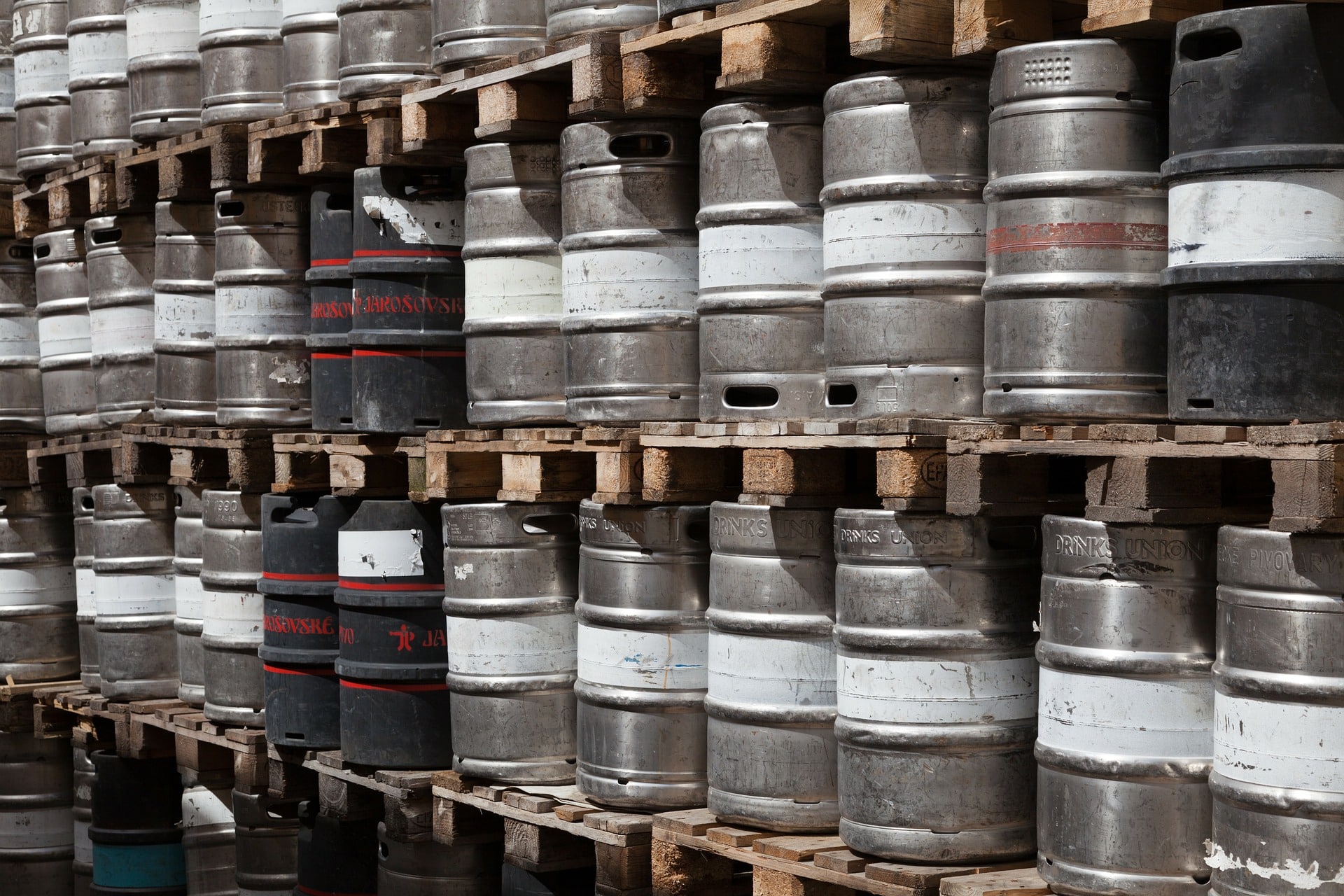
If you have kegs, you may have a $100,000 loss that you don’t know about yet.
For some reason, craft breweries don’t treat kegs like assets. Maybe kegs are thought of like bottles, cans or cardboard – just a cost of the package and cost of doing business. However, unlike cans and bottles, your kegs have real value.
There is a surprising lack of accountability with kegs, and it costs the industry millions of dollars. More importantly, it could be costing you over $100,000.
Kegs are Dollar Bills
You buy kegs, fill them with beer and send them out the door. Do you have a good process to make sure you get them all back? If you were to look at your balance sheet, would you be able to find all the kegs that you are supposed to have on hand?
If you’re like many craft breweries the answer is no.
Kegs are not just stainless steel, they are dollar bills. Kegs have legs and they disappear. Every day, there are a lot of dollar bills walking out your door.
In this article we’ll review the cost of all those kegs, and share the process that Anheuser Busch uses to keep track of their kegs. It saves them millions, it will save you tens of thousands.
- The Fatal Flaw with Keg management
- Treat kegs like inventory or be prepared to lose a lot of money
- Count regularly. Follow the process used by AB
The Fatal Flaw with Keg Returns
The fatal flaw with most keg deposit and return systems is that there is no incentive for anyone to return the keg to you. You are the rightful owner of those kegs, but the system doesn’t care if you ever get them back.
Follow the money. You sell a keg of beer to the distributor, and charge them a deposit. The distributor sells that keg to the retailer and charges them a deposit. If the retailer makes off premise sales, they charge the end customer a deposit.
At this point in the keg cycle, everyone has been paid back except for you. As a result, no one really cares what happens to your kegs.
A typical keg deposit ranges from $30 to $50. However, the actual value of the keg far exceeds this amount.
The retailer has been paid. The distributor has been paid. The only one that hasn’t been paid is you – the brewery. No one has an incentive to get your keg back, and you are left to eat the loss. The loss is the difference between what you charge for a deposit and what the keg cost you.
Understand that no one in the cycle has as much to lose financially as you do. If you don’t fix the keg problem, no one else is going to step up and fix it for you.
Kegs are Assets: Treat them that way
Your balance sheet keeps track of all your brewery assets. Here you’ll find the cost of your brewhouse, tanks, and capital improvements made to your brewery. You will also find the cost of all the kegs you have purchased.
You may have a couple hundred or many tens of thousands of kegs listed on your balance sheet. At an average cost of $100 per keg, this adds to up to tens or hundreds of thousands of dollars in assets. The question is: do you know where these kegs are?
Companies go to great lengths to safeguard and protect their assets. You wouldn’t dream of letting a fermentation or brite tank out of your sight, but you let kegs go unaccounted for weeks or months at a time. Sometimes, these kegs never return at all.
Action item: Look at your balance sheet and find out how many kegs you are supposed to have on hand. How big is the number? Chances are it is huge and will surprise you.
Count your Kegs or Risk a Huge Financial Loss
Once you’ve checked your balance sheet to see how many kegs you should have, it’s time to find out if you actually still have them. It’s time to count the kegs.
As you know, kegs are located all over the place. There are empty and full kegs in your brewery, at the distributor and at the retailer. Finding the kegs is challenge enough, let alone counting them and reconciling them to your balance sheet assets.
To begin, borrow this count process.
Downloading this and printing it is the easy part. Following the steps and actually conducting the count is the hard part. But this is the only way you’ll know if $100,000 in kegs have gone missing.
Establish a count process to determine what you actually have right now. Use the count process regularly so that you don’t lose any more kegs or any more money in the future.
Steal this Idea from Anheuser-Busch
Many of the big breweries hold distributors responsible for lost kegs. They track how many kegs they send to the distributor, and how many they get back. If there’s a shortfall, the distributor pays for them.
AB uses a simple cooperage audit report to hold their distributors accountable. Borrow this audit report, and implement it in your brewery.
- Count Full cooperage in inventory +
- Count Empty cooperage in inventory +
- Count Full and empty cooperage in the hands of retailers =
- Total cooperage in the distributor territory.
The grand total of kegs counted is then compared to the brewery records of how many kegs the distributor should have on hand. Any shortfall is charged back to the distributor at a pre-determined rate.
The rate should be at least the difference between the cost of the keg and the amount of deposit received from the distributor.
Use this idea from Anheuser-Busch: Hold your distributor responsible for lost kegs. It will save you a lot of money. Maybe even a cool $100,000.
Wrap Up + Action Items
Kegs are dollars. Look at your balance sheet and determine how many are you supposed to have. Count your kegs now and figure out how many you’ve lost. Count your kegs regularly going forward so you don’t lose any more.
Anheuser-Busch and many other big breweries hold their distributor responsible for any lost kegs. You need to do the same so that you can save tens or hundreds of thousands of dollars in missing cooperage.




Comments are closed